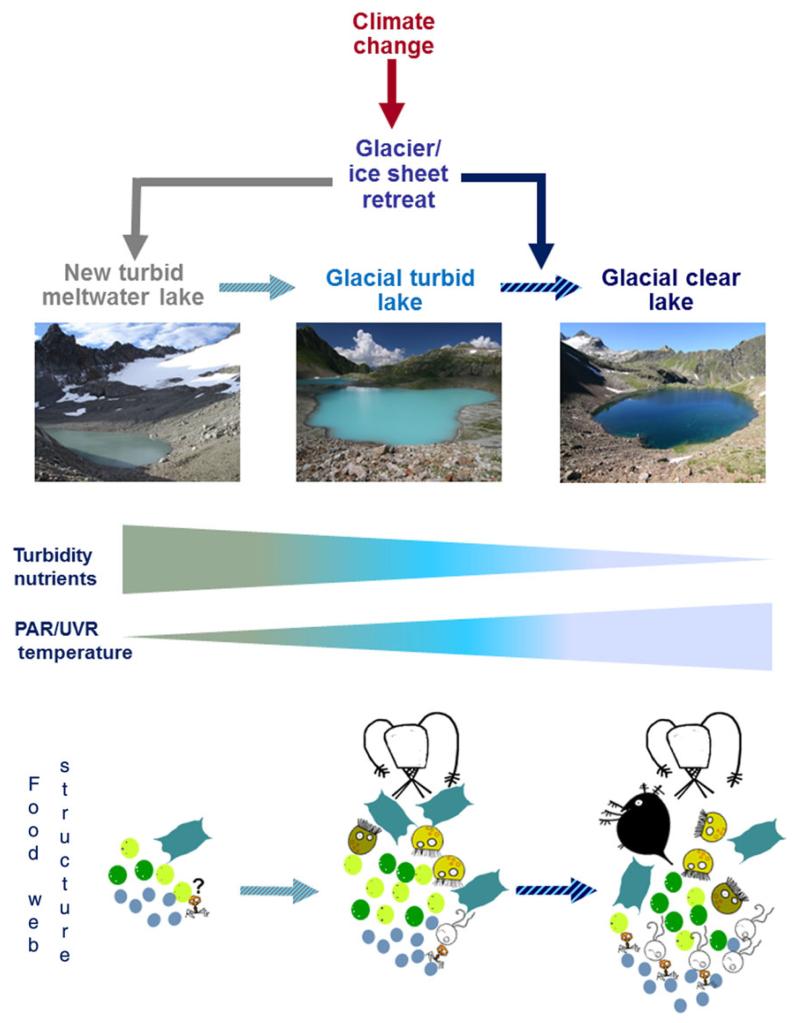Fig. 1.
The retreat of glaciers and ice sheets caused by climate change creates new highly turbid meltwater proglacial/ice-contact lakes that during its ontogeny became less turbid (bright turquoise color) until they lose hydrological connectivity with the glacier and shift to a clear condition with high water transparency. The rapid glacier retreat also accelerates the shift from a turbid to a clear state (blue solid arrow). Along this lake’s ontogeny, strong gradients in turbidity, potentially also in nutrient concentrations, as well as in PAR/UVR and water temperature are found. The planktonic food-web in the highly turbid proglacial lakes is largely dominated by microbes with few metazoans present such as rotifers. As soon as turbidity and other in-lake conditions change (see text for more explanation), higher abundance of a more diverse planktonic food-web including copepods are feasible, but usually cladocerans such as Daphnia are found only when turbidity substantially decrease or the ratio of food to glacial particles improves. The food-web structure should be considered as a transition representation rather than a fixed one. Further steps in lake’s ontogeny, for example, when dissolved organic carbon (DOC) inputs from the catchment make lakes less UV transparent are not shown. Color-coded cartoons in the food-web structure: Blue, prokaryotes; light green, mixotrophic phytoplankton; dark green, phototrophic phytoplankton; yellow, mixotrophic ciliates; brown, heterotrophic ciliates; white, heterotrophic nanoflagellates. Depiction of rotifers, copepods, Daphnia and viruses are self-evident.

